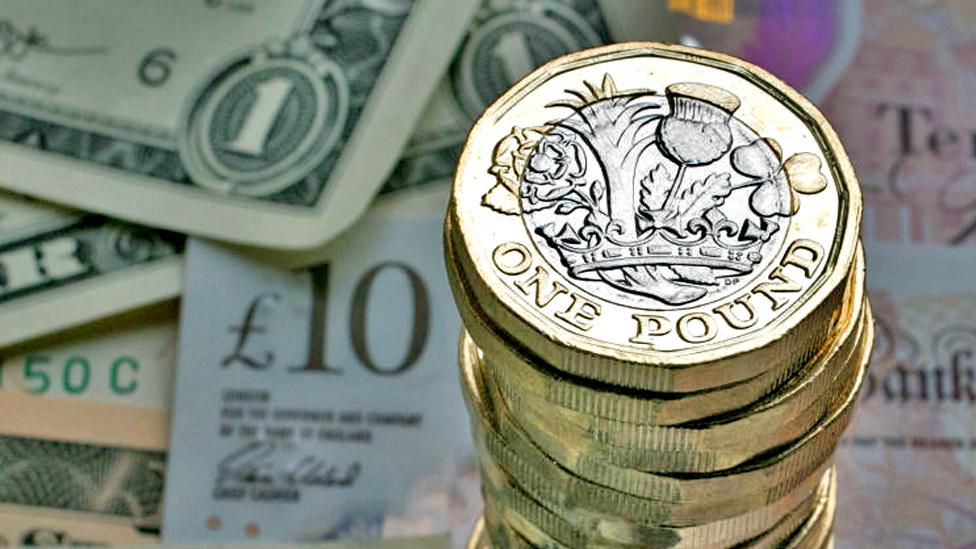Will this huge tax cutting gamble pay off?
- Published

It is an unofficial Budget of staggering size designed to jump start the economy.
A £12bn corporation tax cut, a £17bn National Insurance cut, a £5bn basic rate income tax cut, and a £2bn cut to the 45p rate. Put together the biggest tax cutting moment for a half a century.
And while it should initially soothe some of the recession we are already likely in, the similarly huge borrowing has sent markets reeling.
It has been one of the worst days for UK government bonds in decades, with some of the biggest one-day hikes in the cost of borrowing since the 1990s.
This has consequences not just for government, as it also sets the basis for long-term borrowing rates for companies and householders.
The lack of numbers, visibility, and quantifiable commitment to reining in government borrowing has added to uncertainty in markets.
The government had to tell the markets that it needed to borrow an extra £72bn this year, but did not publish the numbers behind that. Interest rates charged for British debt hit 4%, having been 3.1% earlier this week, and 1.8% at the beginning of the leadership contest with Rishi Sunak.
The Treasury's answer to all this is a table of forecasts which shows how much tax revenue would be raised if its reforms were able to permanently raise growth in the economy.
But that table, while an aspiration that every chancellor and every politician seeks, has not convinced the markets. It is an assumption of extra tax revenue that has replaced actual tax.
What's the plan? To increase the productivity of the economy and therefore growth over the long term and so tax revenue. The detail of that plan is not in today's announcement. A tax cut that could underpin such a plan is mainly what we got today, alongside some interesting economic reforms, for financial services and enterprise zones.
Many of the most important economic policies that could help boost growth were left unmentioned. For example, the last time the Office for Budget Responsibility adjusted UK's long-term growth prospects, it was to cut them, in July, on account of Britain's shrinking workforce. Perhaps worker visas, skills, infrastructure, trade barriers for exporters to Europe will be addressed another time. All contain growth-enhancing policy areas that will test the limits of the PM's acceptance of doing unpopular things.
The prime minister criticised bean counters in her leadership campaign. Today's plan only shows one side of the ledger. For a chancellor making a debut, it is usual to focus on fiscal credibility. That was not the priority here.
There are considerable risks in this plan, but the government has thrown the kitchen sink at it. It should help growth upfront. As global markets send the interest rates charged to the government rocketing, however, there is a risk that the economy is left in a couple of years having enjoyed a temporary stimulus, and a permanent hangover of high interest rates and high debts. As mortgage rates and commercial borrowing rises, there are risks in the housing market.
So there are many gaps left to fill in this plan for growth. The government needs an aspiration to raise growth to become a reality. But the echoes of the last Budget of this size in 1972, which led to an infamous period of boom and bust under chancellor Anthony Barber, will not be comfortable.
- Published23 September 2022

- Published17 October 2022

- Published23 September 2022

- Published23 September 2022

